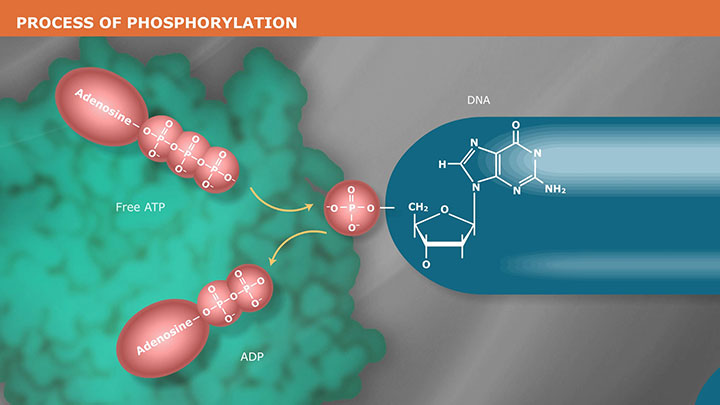The Mechanism of DNA Phosphorylation
Script
In standard cloning protocols, a five-prime phosphate is required to serve as the donor in the ligation reaction. At a minimum, either the fragment ends or vector ends must be phosphorylated.
PCR products need to have a five-prime phosphate added before ligation is attempted with a non-phosphorylated vector. If the vector is phosphorylated or the PCR products regenerated with phosphorylated primers, no phosphorylation step is needed.
Similarly, digestion of DNA with a restriction enzyme will always produce a five-prime phosphate making a separate phosphorylation step unnecessary.
In cloning protocols, phosphorylation is typically accomplished by T4 polynucleotide kinase, which transfers the terminal gamma phosphate to a polynucleotide like DNA.
The phosphorylated DNA is now ready for ligation. Visit CloneWithNEB.com for the full list of products available for this application.
Related Videos
-

The Mechanism of DNA Phosphorylation -

What are the best conditions for DNA ligation?

